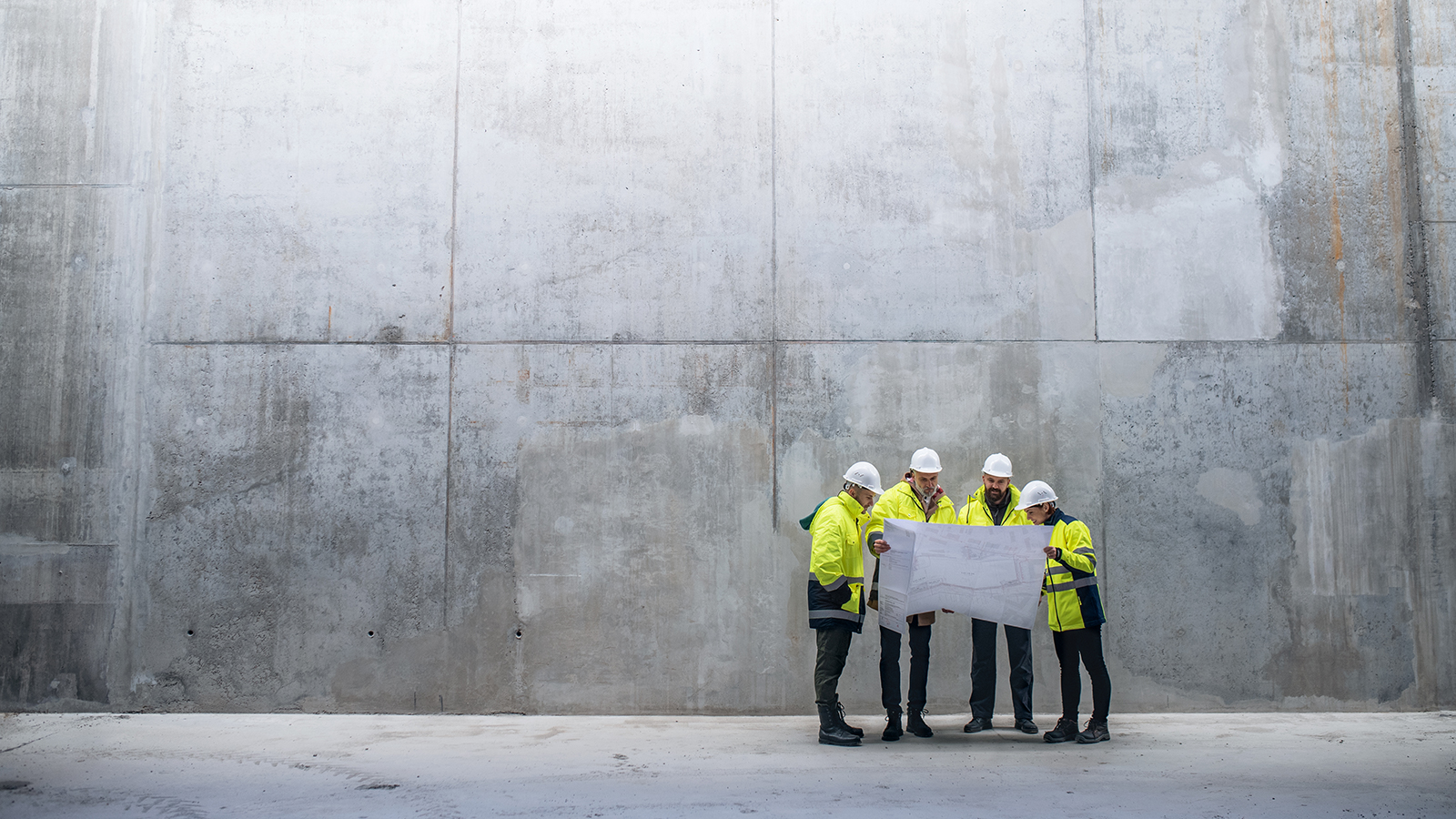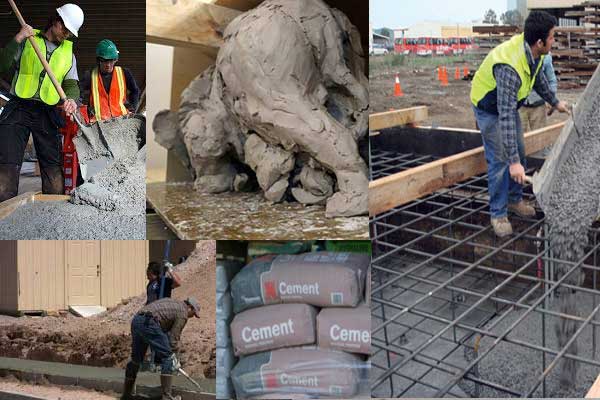WCGE commercial concrete: Ways to Balance Aesthetics, Strength, and Cost in One Project
WCGE commercial concrete: Ways to Balance Aesthetics, Strength, and Cost in One Project
Blog Article
The Crucial Function of Concrete Foundation in Structural Integrity and Durability
When it comes to developing a home, the foundation is a lot more critical than you might assume. Concrete structures provide unmatched toughness and longevity, guaranteeing your structure can endure different environmental difficulties. Without a solid base, you take the chance of possible concerns like changing or cracking, which can compromise security and worth. Comprehending the subtleties of concrete structures might be the key to protecting your financial investment for many years ahead. So, what should you take into consideration following?
Understanding the Significance of Concrete Foundations
Concrete foundations are vital to the general stability of any type of framework, as they provide the important support required to endure various tons and ecological problems. When you believe about developing a home or an industrial space, the structure is the very first point you ought to take into consideration. It acts as an obstacle against moisture, safeguarding your building from water damages. A well-placed concrete structure likewise prevents settling and changing, which can lead to splits in wall surfaces and floorings. You'll desire to guarantee that the structure is properly developed and enhanced, as this affects the durability of your structure. Furthermore, a solid structure can improve energy performance by reducing air leaks. Remember, disregarding the importance of a concrete structure can cause costly repair work down the line. So, buying a quality structure upfront is vital for the stability and durability of your structure.
Advantages of Concrete Foundations for Architectural Integrity
While lots of factors contribute to a building's architectural integrity, concrete structures provide unequaled longevity and toughness. You'll value that concrete can withstand severe weather, standing up to both dampness and temperature level fluctuations. This strength implies your structure is much less likely to experience cracking or shifting gradually, which can jeopardize its safety.Additionally, concrete's integral weight offers a solid base, preventing activity throughout all-natural events like earthquakes or floods. When you choose a concrete foundation, you're additionally selecting reduced maintenance; unlike timber, it will not rot or attract parasites, conserving you money and time in repairs.Moreover, concrete's fire resistance offers added safety, ensuring your framework can sustain high temperatures without significant damage. On the whole, buying a concrete foundation implies you're focusing on the long-lasting security and integrity of your structure, making it a sensible choice for any kind of building and construction job.
Usual Kinds of Concrete Foundations
When it involves building foundations, comprehending the common sorts of concrete foundations can assist you make informed selections for your task. One of the most widespread kinds include slab-on-grade, crawl room, and complete basement foundations.A slab-on-grade foundation is an easy, cost-effective option, where a thick concrete piece is poured directly on the ground. This type functions well in cozy climates, as it decreases heat loss.Crawl room structures raise the home somewhat above ground, enabling air flow and access to plumbing and electrical systems. This design can help stop wetness issues.Full basement foundations provide extra living or storage space while offering superb architectural assistance. They call for more excavation and are commonly made use of in cooler climates to avoid frost heave.
Variables to Think About When Designing a Concrete Foundation

Finest Practices for Putting Up Concrete Foundations
When you're installing a concrete foundation, correct site preparation is necessary to assure stability (West Coast General Engineering Concrete). You'll also need to understand support techniques to enhance strength and longevity. Ultimately, don't overlook the healing process, as it plays an essential role in accomplishing a solid structure
Site Preparation Relevance
Although it may appear straightforward, correct website preparation is crucial for assuring a solid and sturdy concrete structure. Start by clearing the area of any type of particles, plant life, or organic product that can endanger the foundation's honesty. Next, examine the soil type and compaction; you might require to excavate or add products to create a steady base. Degree the ground to guarantee even weight distribution and stay clear of clearing up concerns later. Setting up correct drainage systems is likewise important to prevent water accumulation, which can deteriorate the structure in time. Mark out the foundation's measurements precisely to assist the putting procedure. By complying with these actions, you'll set the stage for a successful concrete structure that stands the examination of time.
Reinforcement Methods Clarified
When the site is effectively prepared, the following action in ensuring a strong concrete foundation includes applying reliable reinforcement strategies. You must begin by using steel rebar, which gives tensile toughness and aids stop cracking. Lay the rebar in a grid pattern, making sure it rises using spacers to keep correct insurance coverage. Furthermore, think about utilizing wire mesh for extra support, specifically in areas based on hefty loads. Do not neglect to link the rebar junctions safely with cord. For bigger foundations, fiber support can improve durability, minimizing the risk of contraction cracks. Always adhere to local building ordinance and guidelines to make certain compliance. By using these support methods, you'll significantly improve your structure's stamina and durability, laying a solid groundwork for your framework.
Curing Process Fundamentals
To ensure your concrete structure treatments effectively, it's crucial to keep adequate wetness and temperature problems instantly after putting. Start by covering the surface area with a damp cloth or plastic sheet to retain dampness. This keeps the concrete hydrated, preventing fractures and making certain toughness. You ought to additionally check the temperature level; suitable healing important link conditions are between 50 ° F and 90 ° F. If it's also warm, mist the surface area consistently to avoid quick evaporation. For winter, consider utilizing protecting coverings to preserve heat. Aim for a healing period of a minimum of 7 days, as this is vital for optimum strength development. By following these ideal practices, you'll boost your Recommended Reading foundation's sturdiness and durability, guaranteeing structural stability for years to come.
Maintenance of Concrete Structures for Long Life
To maintain your concrete structure strong and long-term, normal assessments are essential. You ought to likewise guarantee effective drainage options are in location to protect against water damage. If you identify any kind of splits, addressing them immediately will save you from bigger issues down the line.

Normal Assessments and Assessments
While regular examinations and analyses could appear like a chore, they're necessary for keeping the integrity of your concrete foundation. By routinely inspecting for cracks, changes, or signs of wear, you can capture potential issues prior to they escalate into costly repairs. Look for any water merging around the structure or uncommon settling, as these can signify underlying issues. It's also a good idea to monitor any changes in your house's framework, like doors that stick or windows that don't open efficiently. Keeping a record of your assessments aids track adjustments with time, permitting proactive upkeep. Eventually, these assessments guarantee your foundation stays stable, supporting the longevity and security of your entire structure. Don't ignore this crucial aspect of homeownership!
Effective Water Drainage Solutions
Regular evaluations can reveal problems like water drainage problems that might jeopardize your concrete structure's security. To stop water build-up, ensure your seamless gutters and downspouts straight water far from the foundation. Installing French drains pipes can efficiently redirect surface area and groundwater, decreasing pressure on your structure walls. Furthermore, rating the soil around your home aids ensure that water moves away, instead of merging near your foundation.Consider making use of sump pumps in locations vulnerable to flooding, as they proactively eliminate excess water. Regularly look for clogs in water drainage systems and clear them promptly. You'll shield your foundation's integrity and long life by taking these proactive actions. Keep in mind, reliable drain solutions are essential for maintaining a solid, sturdy concrete structure.
Motivate Fracture Repair Works
When you notice splits in your concrete foundation, resolving them quickly is essential for maintaining its durability. Tiny cracks can quickly develop into larger problems, compromising the structural stability of your home. Frequently evaluate your structure for signs of damage, such as horizontal or vertical splits. If you detect any type of, don't wait-- repair them right away. You can make use of epoxy injections or concrete patching compounds, which work for securing fractures. Constantly follow the supplier's instructions and think about see post getting in touch with an expert for substantial damage. Remember, timely repair work not just improve your foundation's toughness but additionally save you cash in the future by preventing much more comprehensive repair work down the line. Keep positive, and your foundation will certainly continue to be solid and safe and secure.
Addressing Common Issues With Concrete Foundations
Concrete foundations can encounter numerous problems in time, making it important to recognize and address them without delay. One of the most common problems is fracturing, which can take place due to temperature variations or working out soil. If you see splits, it's vital to analyze their size and depth; small fractures can usually be sealed, while larger ones may need expert evaluation.Water breach is one more significant issue. Excess moisture can cause mold growth and structural deterioration. Guarantee proper drain around your structure to mitigate this risk. Additionally, seek indications of shifting or bowing wall surfaces, as this can suggest underlying problems with your foundation's stability.Regular inspections are fundamental to capture these issues early. If you detect any worrying signs, don't think twice to speak with a structure professional. By staying proactive, you can preserve the stability and longevity of your concrete structure, assuring your home continues to be risk-free and safe and secure.
Regularly Asked Inquiries
How Does Dirt Kind Influence Concrete Structure Performance?
Soil type considerably influences concrete structure performance. If you've obtained expansive clay, as an example, it can trigger changing and splitting. Sandy dirt could cause settling. Comprehending your soil aids assure a secure structure.
Can Concrete Foundations Be Repaired if Harmed?
Yes, you can repair damaged concrete structures. Relying on the level of the damages, strategies like epoxy shot or piece jacking can restore security. It's ideal to seek advice from an expert for reliable services.
What Is the Normal Lifespan of a Concrete Structure?
A concrete foundation commonly lasts 30 to 100 years, depending on aspects like soil problems, climate, and upkeep. You'll intend to watch on it to guarantee it stays healthy throughout its lifespan.
Are There Choice Materials to Concrete for Foundations?
Yes, there are options to concrete for structures, like steel, lumber, and even recycled materials. Each choice has one-of-a-kind advantages and downsides, so you ought to consider your task's details requirements when choosing the right product.
How Does Environment Impact Concrete Structure Longevity?
Climate considerably affects concrete structure resilience (West Coast General Engineering industrial concrete Rancho Cucamonga). Severe temperature levels, wetness, and freeze-thaw cycles can deteriorate the material, resulting in fractures and architectural issues. You should take into consideration regional climate problems when intending your structure to guarantee long-lasting performance
Report this page